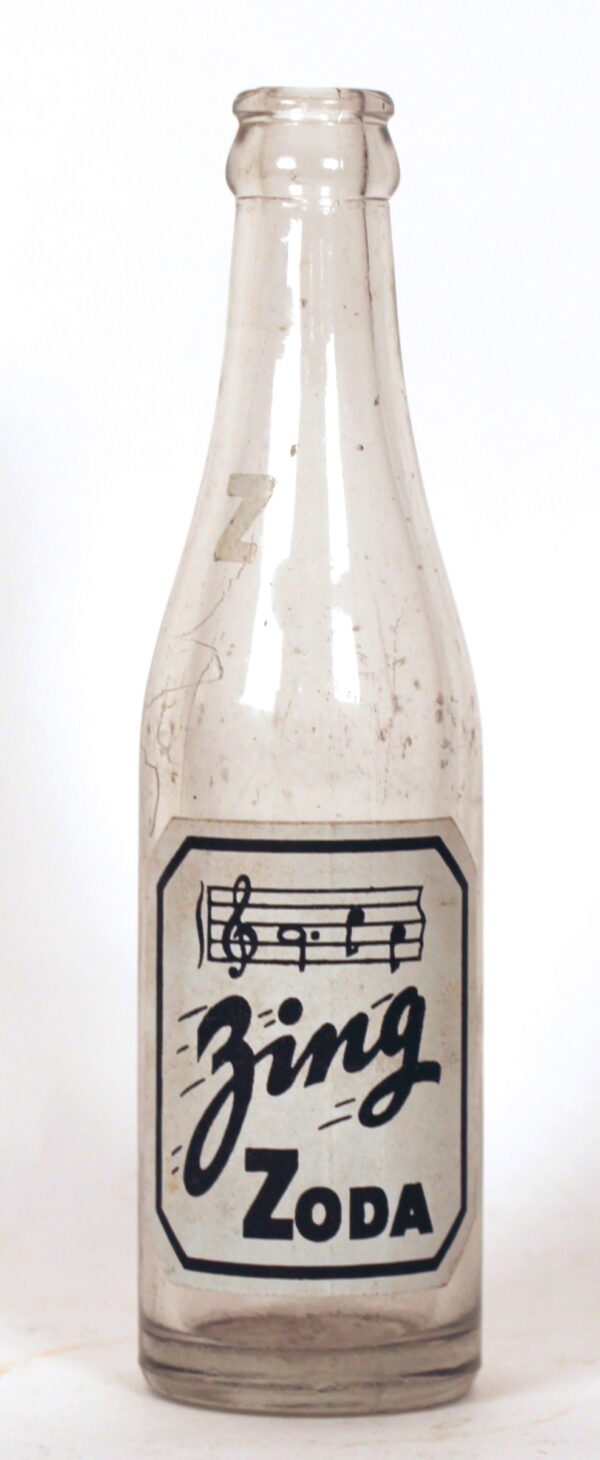
Zing Zoda Painted Label Soda Bottle, Millstadt, IL. Circa 1940
This is a very rare Zing Zoda ACL Soda Bottle from the Kay-B Company in Millstadt, Illinois. Circa 1940.
CONTACT US FOR A FREE APPRAISAL OF YOUR ANTIQUE ADVERTISING COLLECTIBLES!
CONTACT US FOR A FREE APPRAISAL OF YOUR ANTIQUE ADVERTISING COLLECTIBLES!
CONTACT US FOR A FREE APPRAISAL OF YOUR ANTIQUE ADVERTISING COLLECTIBLES!
Dairy collectibles include milk bottles, bottle caps, milk cans, wooden crates, signs, trays, ice cream containers, clocks and calendars. Milk bottles had the company names embossed or painted on them. The manufacturer’s name was also carved into the early wooden milk crates that carried the product in it.
Dairy signs were made out of cardboard or tin and often featured children or families. By the early 1900’s, advertising messages included how drinking milk was healthy for everyone, such as “Milk Belongs in Every Meal”, “Milk Builds Great Athletes” and “No One Ever Outgrows the Need for Milk”.
Some of the earliest dairy collectibles are from the small dairies in the late 1800’s that were local. Originally, milk was scooped directly from the farmer’s churn into jugs that customers would leave on their doorsteps. The milk was delivered by horse-drawn carriages. By the early 1900’s, small town dairies were virtually everywhere and the farmers competed against each other as they packaged and sold their milk in bottles that had their names on them. In the larger cities, dairies competed against both large dairies and the smaller mom-and-pop ones.
Inventions such as milk bottles, milking machines, pasteurization equipment and refrigerated tanks helped make milk healthier and easier to get to people in all cities. It’s not known for certain when the first milk bottle was introduced. Crockery type jars were originally used in the late 1870’s. One of the first glass milk bottles was developed in 1884 by a New York pharmacist, Dr. Thatcher. Thatcher’s “Common Sense Milk Bottle” had caps that were sealed with a waxed paper disk and protected the milk from germs. Thatcher realized that the contaminated milk had been causing many juvenile deaths after watching milkmen ride up to homes and dip milk from dirty cans and pour it into customer’s jugs. Thatcher’s milk bottles were embossed with an image of a farmer milking a cow and stated “Absolutely Pure Bottled Milk”. Originals of these are very hard to find and considered valuable.
Milk bottles are the biggest overall single category of dairy collectibles. Many antique advertising collectors are interested in the early milk bottles that were used for home deliveries and have embossments or “pyroglazed” paintings with the names of the dairies on them. The dairies wanted their company names on the bottles so they would get returned to them and reused. Milk bottles were mostly round through the 1950’s, then square shape became more popular. Otherwise, bottles tend to look very similar with clear glass and either a short or medium length neck. They also had a rounded collar but not a wide mouth to make pouring easy. The value of the bottles depend on the condition, the size, the dairy, the image and message, and the paint color.
As manufacturers improved making milk bottles they found it was less expensive to change from embossed labels to applied colored labels know as ACL’s. Bottles with ACL’s and ones that used embossed slug plates are often considered valuable. By the 1960’s, glass milk bottles were replaced with paper cartons and plastic milk containers that were less expensive to make but preserved the milk’s freshness.
Today, when collectors want to show their antique milk bottles they are often filled up with white sand or small white styrofoam pellets to make them look like they have milk.

This is a very rare Zing Zoda ACL Soda Bottle from the Kay-B Company in Millstadt, Illinois. Circa 1940.
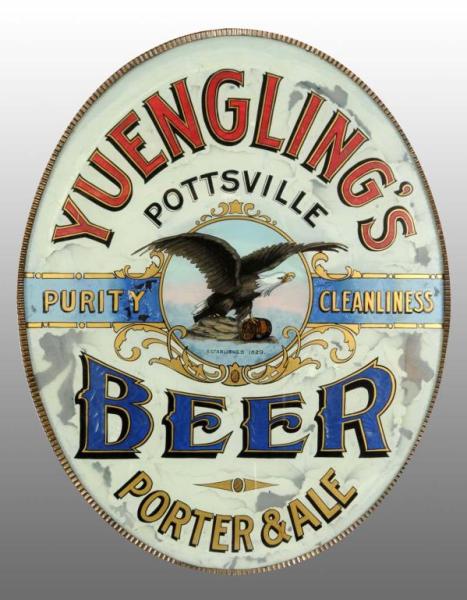
Photographed is a very rare reverse on glass corner beer sign from the Yuengling’s Brewery which is in Pottsville, Pennsylvania.

This is an incredibly colorful and bold tin corner sign from the York, Pennsylvania Brewing Company with the proprietor’s name on it, Karl Katz. This sign is circa 1900.

A nicely framed tin sign from the Taylor and Williams Distilling Company in Louisville, Kentucky advertising their Yellowstone brand of whiskey. Circa 1905.
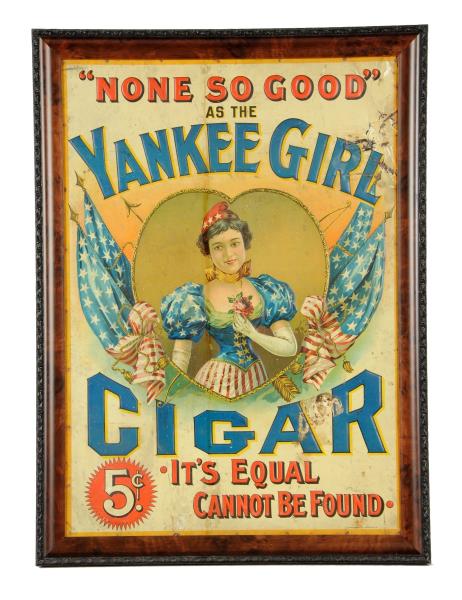
Featured is a beautiful tin sign from the Yankee Girl brand of cigars, circa 1900. The sign has a price of 5 cents per cigar, and boldly claims “It Equal Cannot Be Found”.
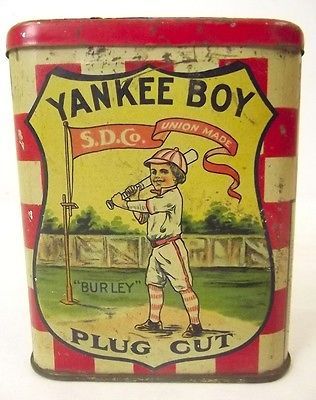
Yankee Boy Pocket Tobacco Tin, featuring a baseball player called Yankee Boy Brand. This brand was fairly popular 100 years ago and pocket tobacco tins are highly collected today. Circa 1917.
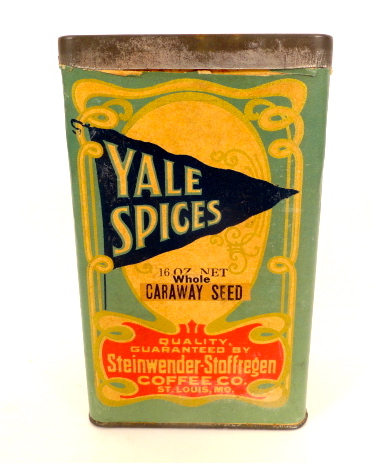
This is a “Yale Spice” tin from the Steinwender-Stoffregen Coffee and Spice Co. based in St. Louis, MO, 1915.

This is a Monkey Brand Roasted Coffee General Store Bin made of tin from the Steinwender-Stoffregen Coffee and Spice Co. based in St. Louis, MO, circa 1910. The Steinwender-Stoffregen Company was known for their flagship Yale brand of coffee in the early 1900’s. However, the Monkey brand was a top seller also for the company, but paled in comparison to the sales of their Yale brand. The Steinwender-Stoffregen Company won an award as the best coffee at the St. Louis World’s Fair Exposition in 1904.
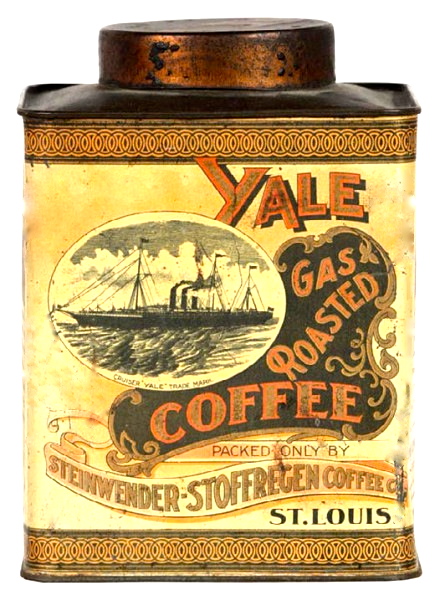
This is a Yale Gas Roasted Coffee tin from the Steinwender-Stoffregen Coffee and Spice Co. based in St. Louis, MO, 1905.

Pictured is a beautiful Wunder Beer serving tray from the Wunder Brewing Company in San Francisco, California. Circa 1905. The Wunder Brewing Company was at the corner of Greenwich and Scott streets and was in existence from 1898-1909.